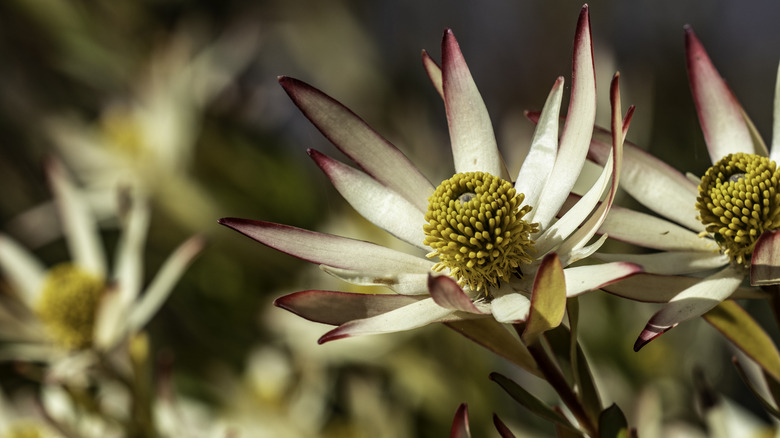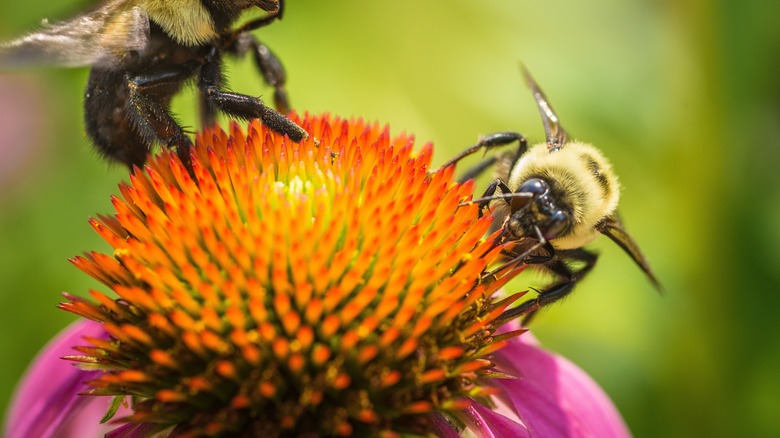Lavender has long been a popular garden staple with its fragrant and bright purple spikes. While this perennial can certainly thrive on its own, there is nothing like having a great partner along for the ride. Companion plants can help suppress weeds, control pests, and improve soil and pollination. One great companion plant to grow near lavender is a coneflower. Together, this pair is not just visually appealing but offers practical benefits, as they are both relatively easy to care for and entice powerful pollinators to your garden.
A coneflower is a flowering perennial belonging to the genus Echinacea, which includes ten species native to eastern and central North America. They’re known for their colorful, cone-shaped blooms that typically appear in summer and early fall. The defining feature of a coneflower is its prominent central cone, formed by a cluster of tiny florets. Surrounding this cone are smaller ray florets, which can be purple, pink, orange, red, yellow, or white, depending on the species and variety. These plants will also spread and self-seed when allowed enough room.
Growing lavender and coneflowers together

Both lavender and coneflowers thrive with basic care and don’t require any extraordinary means. They each enjoy full sun and sandy soil, eliminating the need for different adjustments to accommodate either plant. They like the hot summer heat and are also quite laid back when it comes to watering since both plants are drought-tolerant. Coneflowers and lavender require minimal grooming and upkeep, thriving with occasional deadheading and a light trimming.
When planting, choose a sunny spot with well-drained soil. The best spot in your garden to plant lavender and coneflowers will be one with ample space for them to blossom. Water moderately until they’re established. Coneflowers need about an inch of water a week while lavender only needs water when it becomes dry. In pots, lavender should be watered every few days.
Visually speaking, lavender’s calming blues and purples complement the bold, vibrant hues of coneflowers. You can find deep pinks, fiery oranges, and sunny yellows from coneflowers alongside lavender’s delicate spikes which makes a stunning contrast. It also adds depth and dimension to any border in your garden.
A great opportunity for pollinators and pest control

One of the biggest perks of growing coneflowers and lavender side-by-side is their dual ability to attract pollinators. The plants’ sweet scent and nectar-rich blooms attract a variety of pollinators, from honeybees to hummingbirds. Coneflowers and lavender also attract butterflies and other winged insects. Both plants offer food for goldfinches to feed on.
Beyond the pollinator perks, this duo also works as pest control. Coneflowers, with their spiky foliage and strong fragrance, work as a natural repellent, often deterring aphids. This is important because these pests can feed on lavender. One of the benefits of planting lavender in your garden is that it repels mosquitoes and flies. As an added bonus, coneflowers and lavender are also deer-resistant, meaning you can avoid unwanted bites on your plants in your garden overnight. Together, these plants don’t just bring beauty, color, and good scents to your garden. They help pollinators feast and keep pests away.



